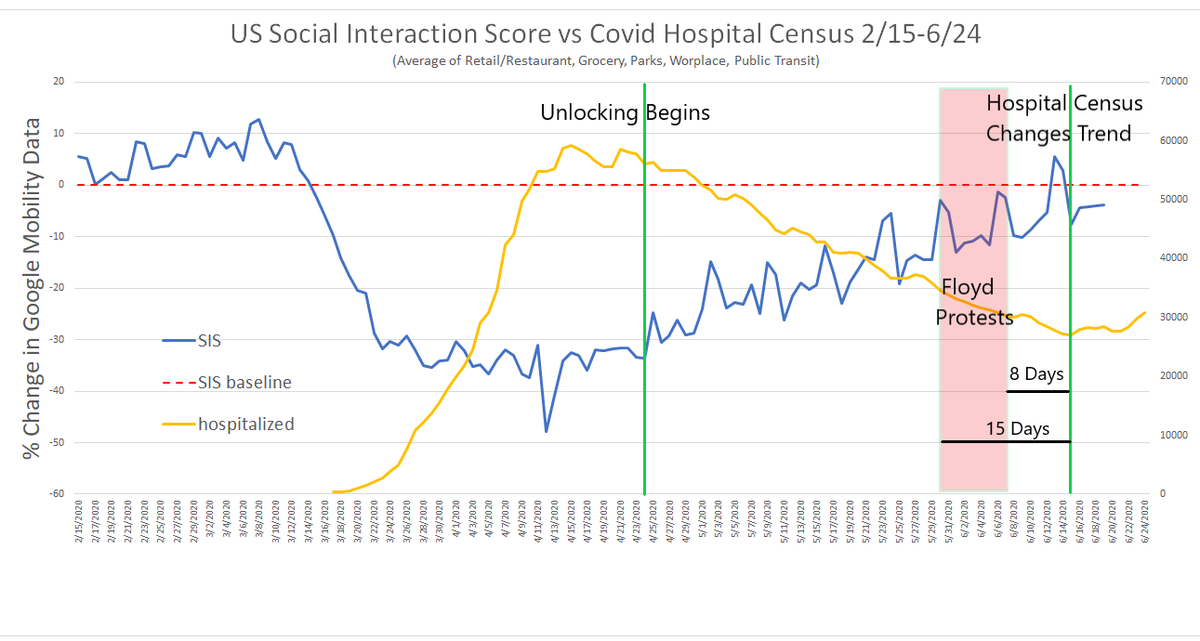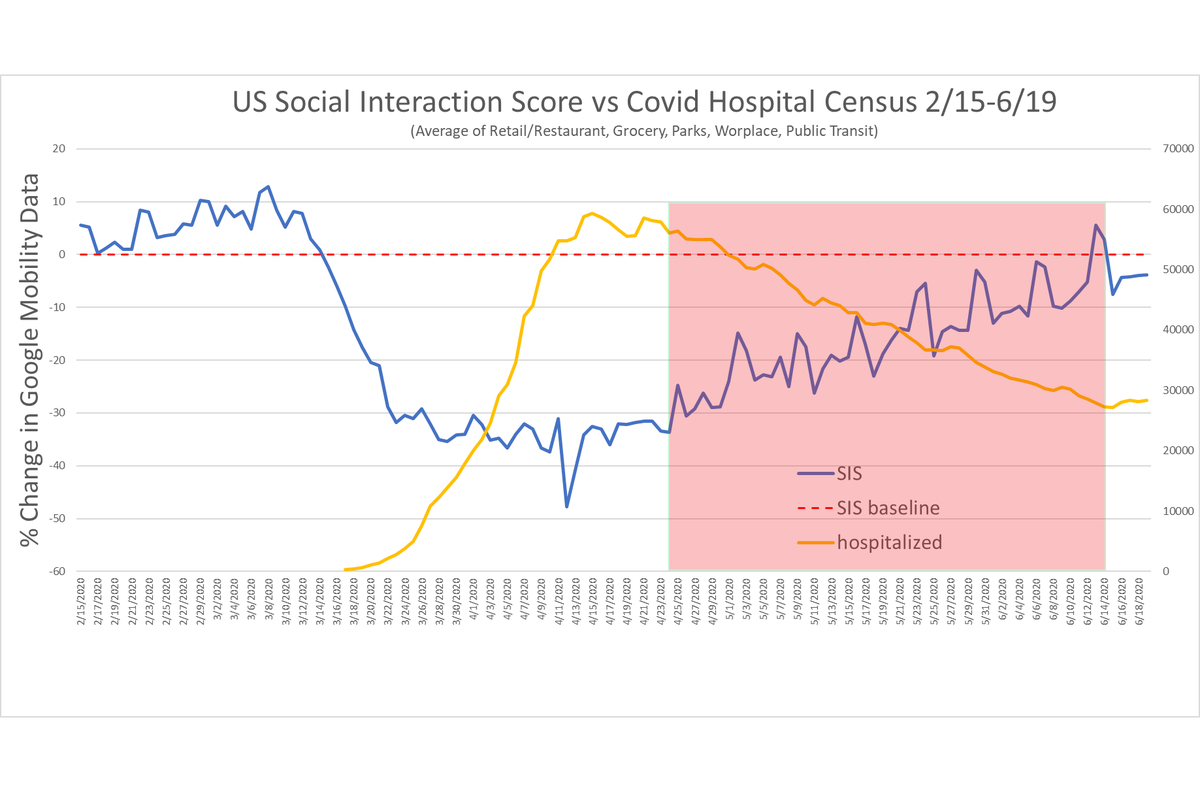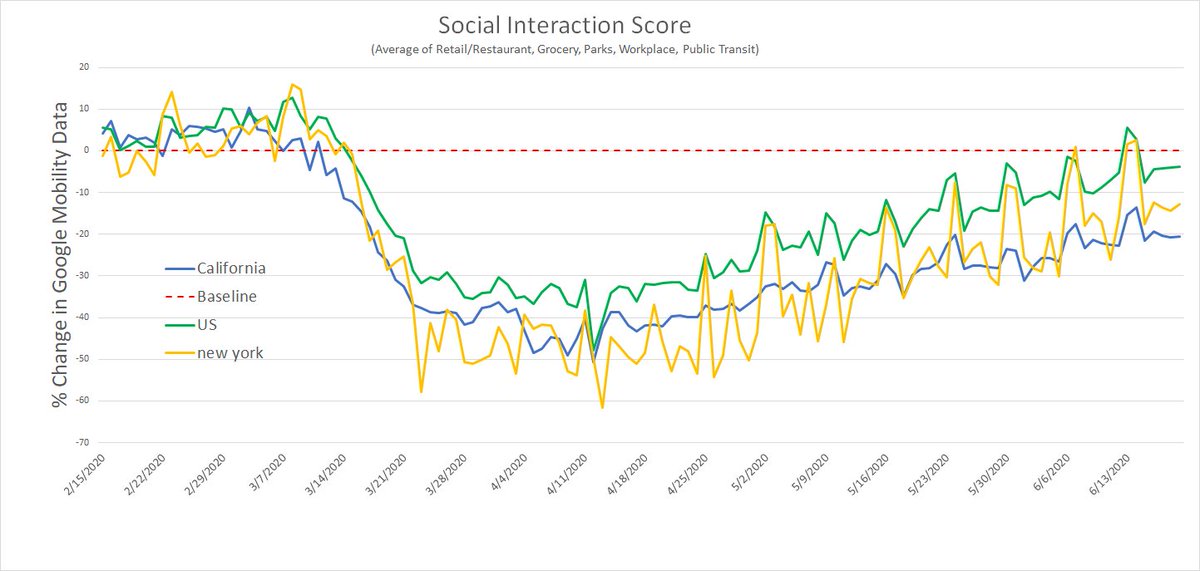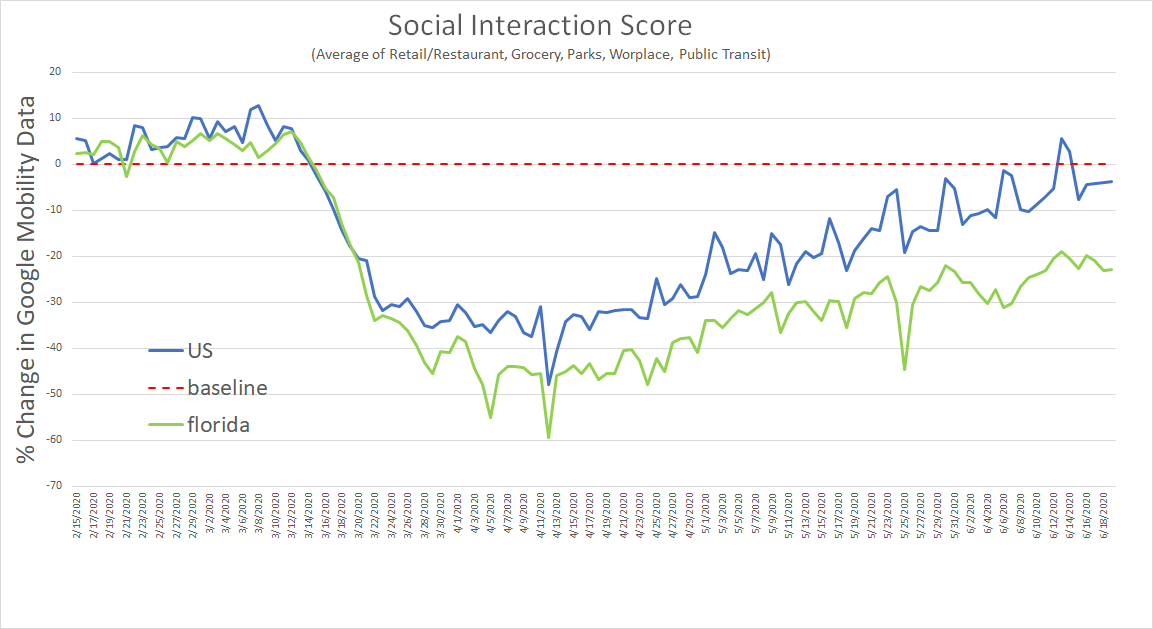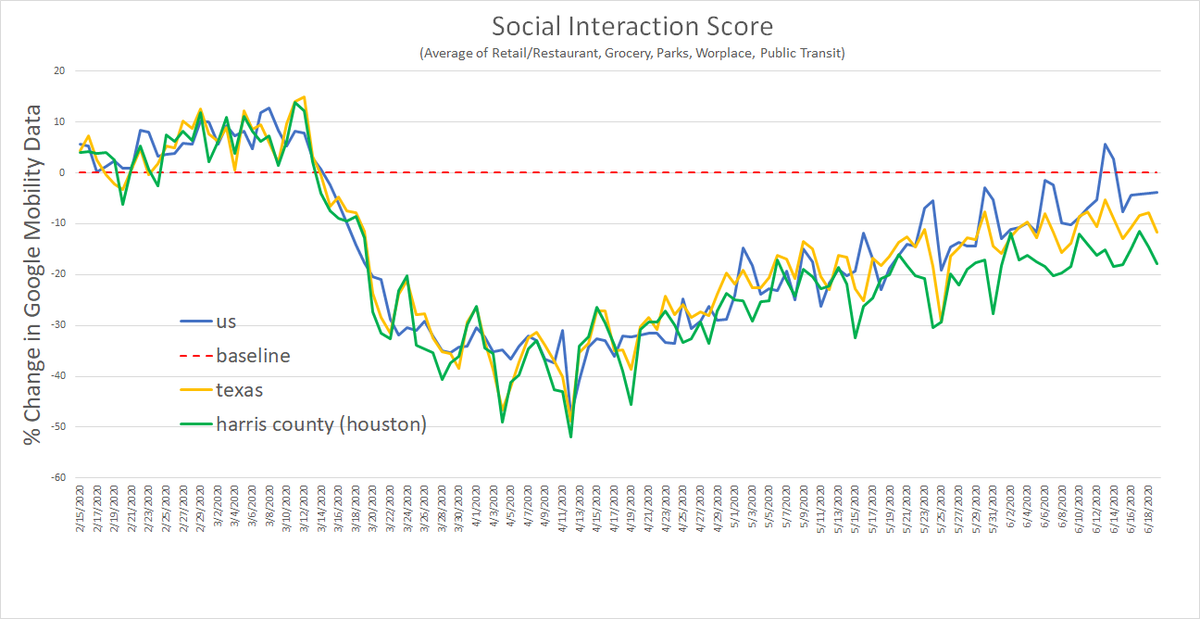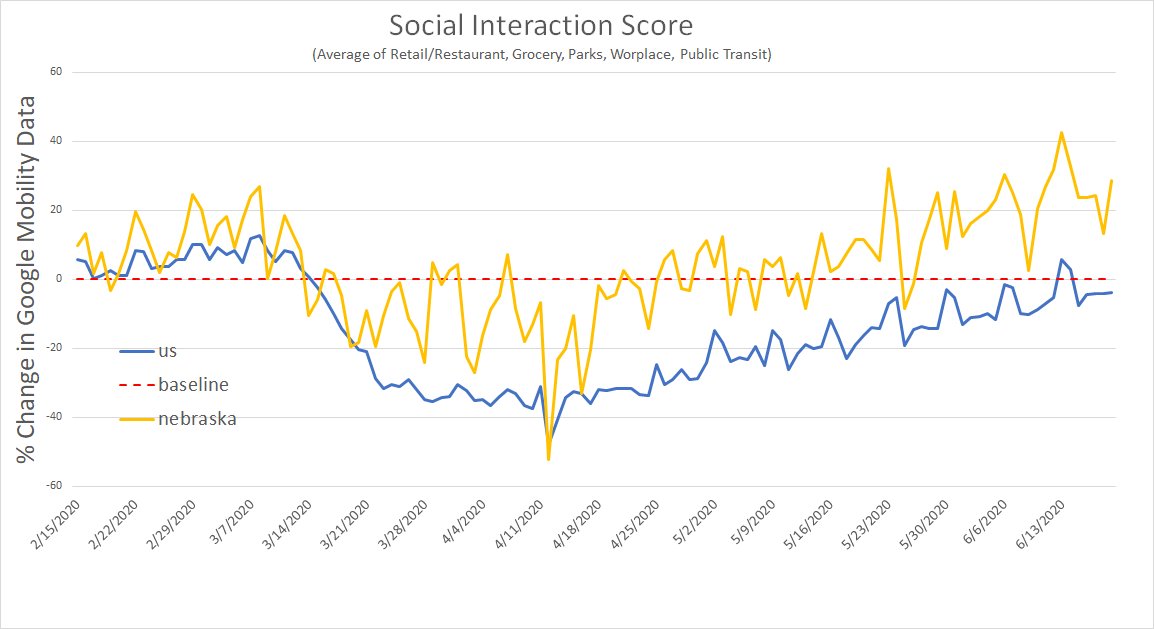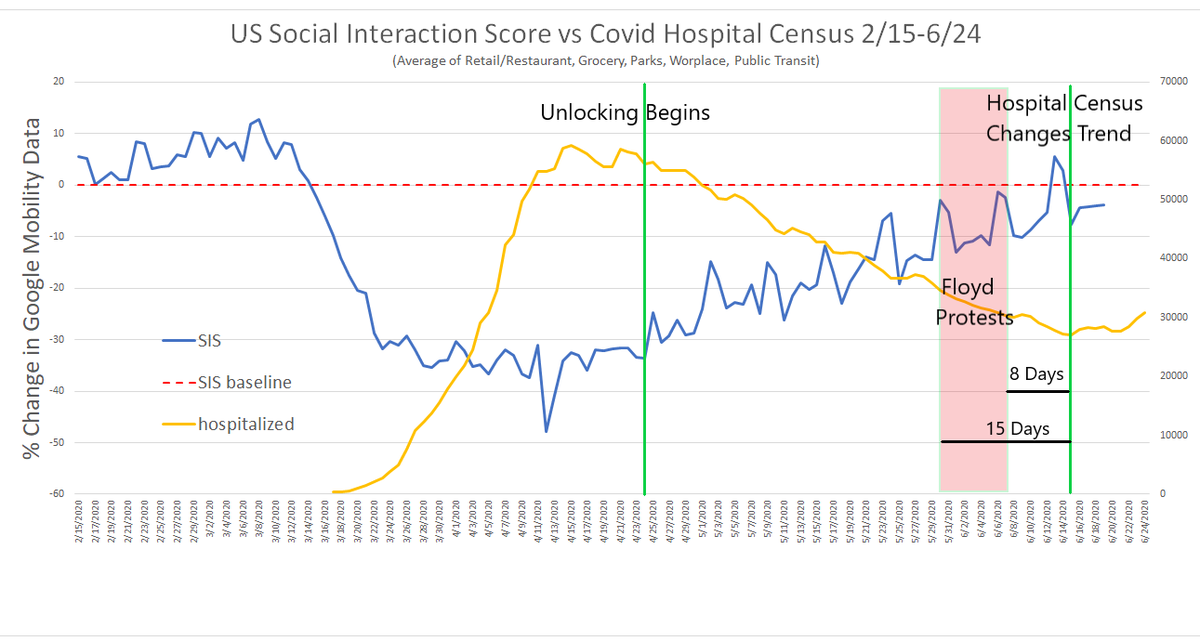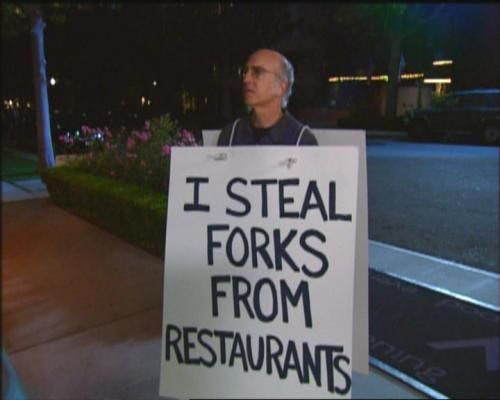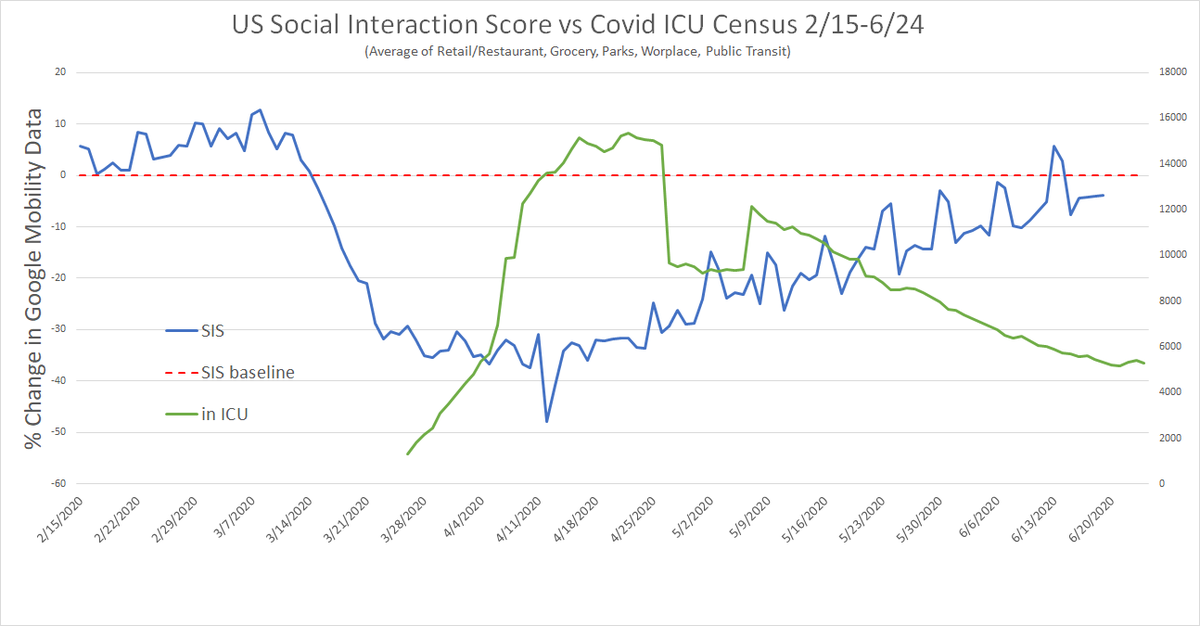US hospitals saw a steady decline in COV+ patients from 4/15 to 6/15. in the last 10 days, they have seen a change in this trend
many have sought to blame this on "re-opening"
but his this a credible claim?
perhaps not
infection to hospital is 11-14 days.
so let& #39;s look back
many have sought to blame this on "re-opening"
but his this a credible claim?
perhaps not
infection to hospital is 11-14 days.
so let& #39;s look back
if something changed 11-14 days before the 2 month long trend changed, then that would seem to be a prime candidate to have a look at.
that points us firmly at the ~2 weeks of mass protests in the US.
the timing aligns near perfectly with what one would hypothesize.
that points us firmly at the ~2 weeks of mass protests in the US.
the timing aligns near perfectly with what one would hypothesize.
consider the alternate hypothesis: that the US opening is causing this.
to accept that, we must posit that a trend that had been going on for 52 days with no effect whatsoever on hospitalization suddenly, for some reason, had an effect.
that seems like a stretch.
to accept that, we must posit that a trend that had been going on for 52 days with no effect whatsoever on hospitalization suddenly, for some reason, had an effect.
that seems like a stretch.
how would one even make that case?
i suppose one could argue that this is being driven by localities and the US aggregate is not meaningful.
but this thesis seems fraught. every state in the US is following the same pattern of bottoming on easter and re-opening in late april
i suppose one could argue that this is being driven by localities and the US aggregate is not meaningful.
but this thesis seems fraught. every state in the US is following the same pattern of bottoming on easter and re-opening in late april
the curves all have the same shape, only degree is different. many of the states being pilloried for their "reckless re-opening" have actually opened LESS than the US average, not more.
this poses further problems for the idea that "opening" is our culprit.
this poses further problems for the idea that "opening" is our culprit.
texas has not materially added to openness this month and lags the US avg in opening.
harris county (houston) which seems to have been such a source of concern, lags texas.
this is all inverse to what one would predict if opening were the issue.
harris county (houston) which seems to have been such a source of concern, lags texas.
this is all inverse to what one would predict if opening were the issue.
meanwhile, in states like nebraska that never really locked down there is literally nothing going on.
there are 131 cov+ patients in the hospital in the whole state, right about at the lows.
there are 131 cov+ patients in the hospital in the whole state, right about at the lows.
states that locked down less have noticeably lower death rates. this has not changed since this set of analyses.
lockdown never had any effect on outcomes.
and this was entirely predictable. https://twitter.com/boriquagato/status/1261705308302270466?s=20">https://twitter.com/boriquaga...
lockdown never had any effect on outcomes.
and this was entirely predictable. https://twitter.com/boriquagato/status/1261705308302270466?s=20">https://twitter.com/boriquaga...
the CDC& #39;s own guidelines and every bit of actual epidemiological literature warns against them and states that once you pass 1% disease prevalence, they have little hope of doing anything.
we were likely at 3-4% by the time anyone reacted. https://twitter.com/boriquagato/status/1275485844510371840?s=20">https://twitter.com/boriquaga...
we were likely at 3-4% by the time anyone reacted. https://twitter.com/boriquagato/status/1275485844510371840?s=20">https://twitter.com/boriquaga...
and that brings us back to this:
the basic science predicts that it takes 11-14 days for an action to affect hospitalization rates. this is exactly what we saw.
a prediction made from basic virology has held up.
that& #39;s highly suggestive.
the basic science predicts that it takes 11-14 days for an action to affect hospitalization rates. this is exactly what we saw.
a prediction made from basic virology has held up.
that& #39;s highly suggestive.
can we seriously claim this is a less likely cause than "after 52 days of having no effect, a trend in opening that was unchanged suddenly had some effect"?
this is like blaming your housekeeper of 3 years of stealing your silver and ignoring the open house you had yesterday.
this is like blaming your housekeeper of 3 years of stealing your silver and ignoring the open house you had yesterday.
i& #39;m sure people will now say "well what about X?" and point to some city that had protests and did not see hospitalization spike.
i& #39;m sure we could easily find examples.
the answer to this is "so?"
they happened where it spiked too.
i& #39;m sure we could easily find examples.
the answer to this is "so?"
they happened where it spiked too.
when you do a drug trial, not all patients respond.
if your drug cured 60% of cancer vs a 0% response baseline, would you seriously point to the folks on whom it didn& #39;t work and claim the drug has no effect?
that& #39;s not how science works.
if your drug cured 60% of cancer vs a 0% response baseline, would you seriously point to the folks on whom it didn& #39;t work and claim the drug has no effect?
that& #39;s not how science works.
of course, this was also not a controlled experiment so lots of things might be driving the outcomes.
the timing alignment with protests, however prices, could be a coincidence.
it could also vary by local factor or something that happened at specific protests.
the timing alignment with protests, however prices, could be a coincidence.
it could also vary by local factor or something that happened at specific protests.
so, was this rise in hospitalization caused by protests?
the honest answer is, we really don& #39;t know.
it could be lots of things, including importing cases and migrant workers from central america. https://www.nytimes.com/2020/06/07/us/coronavirus-border-mexico-california-el-centro.html">https://www.nytimes.com/2020/06/0...
the honest answer is, we really don& #39;t know.
it could be lots of things, including importing cases and migrant workers from central america. https://www.nytimes.com/2020/06/07/us/coronavirus-border-mexico-california-el-centro.html">https://www.nytimes.com/2020/06/0...
the clustering of this issue along the mexican border and in communities with large migrant labor forces that have come for seasonal agriculture is suggestive.
perhaps it& #39;s both.
it could also be the simple fact of hospitals re-opening to elective procedures.
perhaps it& #39;s both.
it could also be the simple fact of hospitals re-opening to elective procedures.
hospitals were running at 30-50% capacity. that& #39;s insanely low. 75-80% is more normal. the US has 924k hospital beds
filling even 20% of them again is A LOT. that& #39;s 185k patients
imagine 3% of the population is COV+. that would add 5500 hospitalizations just on probability
filling even 20% of them again is A LOT. that& #39;s 185k patients
imagine 3% of the population is COV+. that would add 5500 hospitalizations just on probability
that exceeds the whole rise off the lows. does the timing match? sort of. maybe. perhaps not really. i& #39;m not really sure how to nail it down well enough and on hospital policy.
so it& #39;s difficult to say anything definitive.
so it& #39;s difficult to say anything definitive.
the good news is that whatever is driving this is not flowing through to ICU in any meaningful fashion.
this is actually consistent with the protest causality hypothesis.
you& #39;d expect younger cases and based on disease profile, they would not be expected to be as sick.
this is actually consistent with the protest causality hypothesis.
you& #39;d expect younger cases and based on disease profile, they would not be expected to be as sick.
so, here& #39;s what we can say:
hospitalizations dropped for 52 days while the country opened gradually
that opening trend did not change
but the hospitalization trend DID change on 6/15
that makes us look to the beginning of june for cause
this aligns near exactly w/ protests
hospitalizations dropped for 52 days while the country opened gradually
that opening trend did not change
but the hospitalization trend DID change on 6/15
that makes us look to the beginning of june for cause
this aligns near exactly w/ protests
this does not prove protests caused the rise, but is does make them appear a MUCH more likely culprit than "opening".
let& #39;s keep that in mind as we decide what to be concerned about.
ignoring the elephant in the room because it suits one& #39;s politics is not the way to do science.
let& #39;s keep that in mind as we decide what to be concerned about.
ignoring the elephant in the room because it suits one& #39;s politics is not the way to do science.
you have to follow the data where it leads and this data does not seem to lead to "opening" as the issue.
if you& #39;d like to argue about protests and justice, i& #39;m sure you can find many willing partners elsewhere on twitter.
i& #39;m just looking for epidemiological cause and effect
if you& #39;d like to argue about protests and justice, i& #39;m sure you can find many willing partners elsewhere on twitter.
i& #39;m just looking for epidemiological cause and effect
i am pasting this on to the end because my thinking on "why some cities and not others" has evolved and i think this really helps round out the thesis: https://twitter.com/boriquagato/status/1276870968112115714?s=20">https://twitter.com/boriquaga...

 Read on Twitter
Read on Twitter